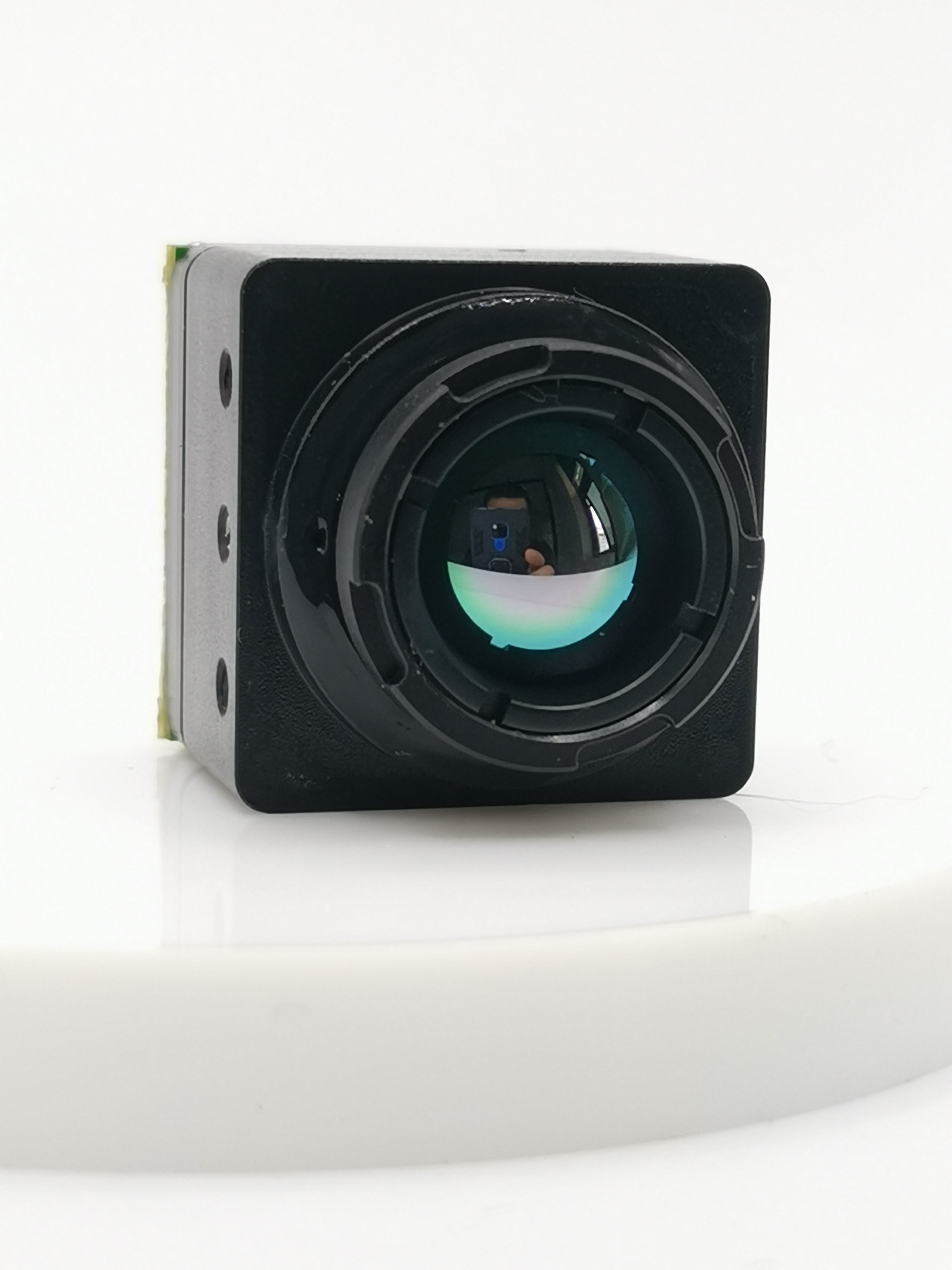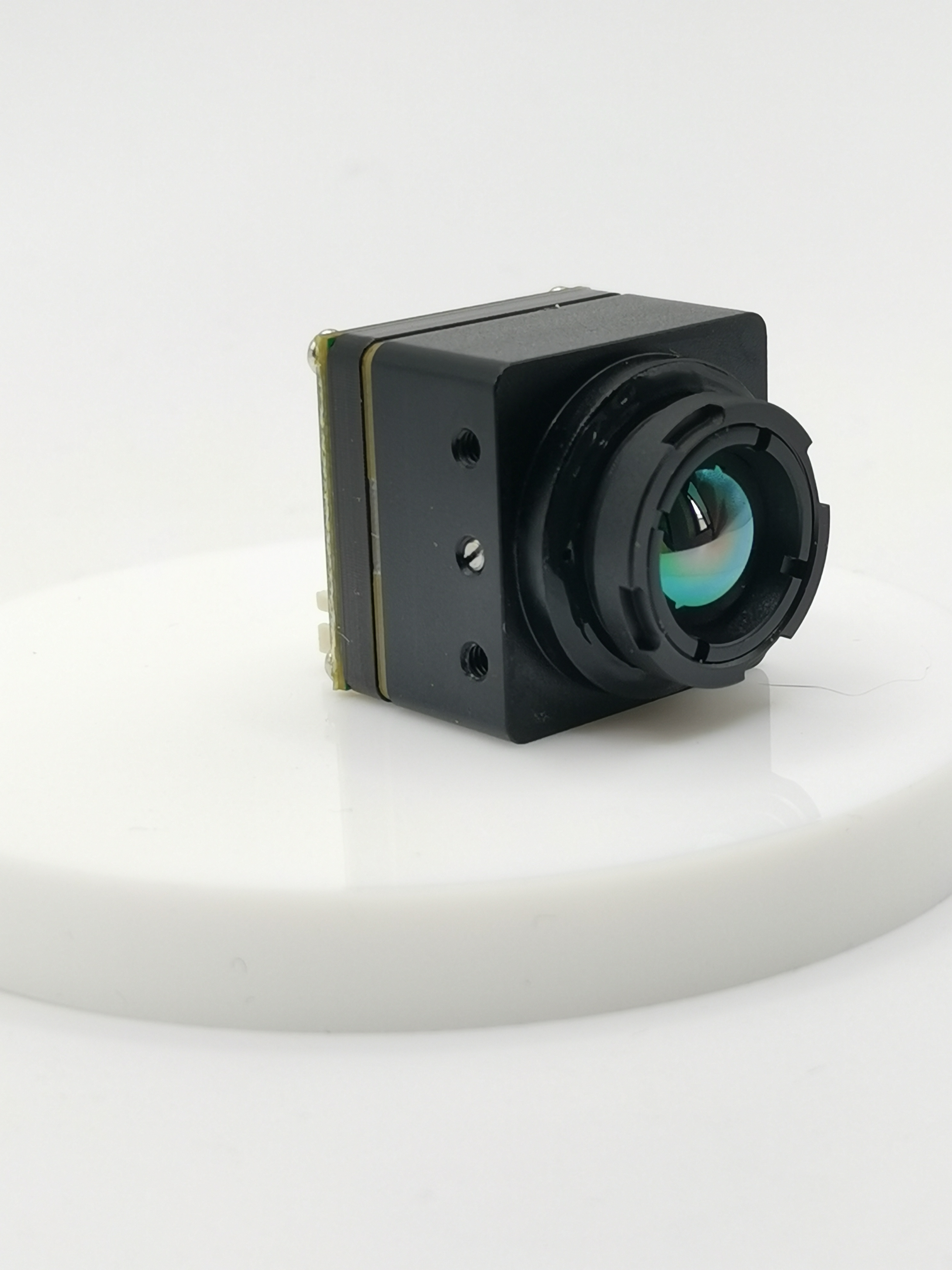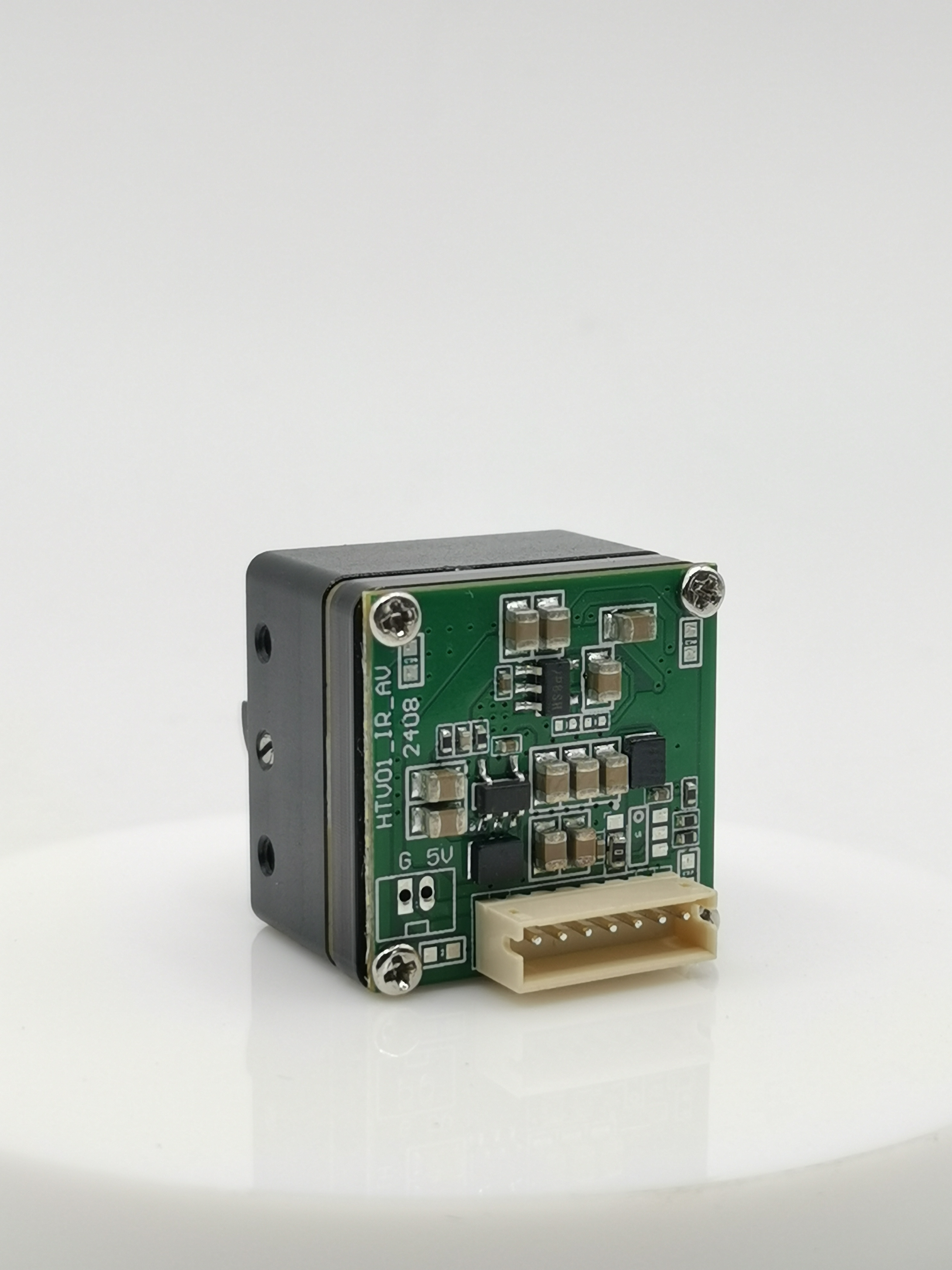Exploring the Functionality of Thermal Surveillance Cameras

Thermal surveillance cameras, also known as thermographics, play a pivotal role in modern surveillance systems. These cutting-edge devices utilize infrared technology to detect and capture heat signatures emitted by objects. With the global market for thermal imaging cameras projected to reach $7.49 billion by 2030, their significance in security and surveillance is undeniable. In this blog, we will delve into the fundamental principles of thermal cameras, explore their diverse applications across various industries, and discuss both their limitations and future potential. Additionally, we will address common questions such as "can thermal cameras see through walls?" and highlight the convenience of using a USB thermal camera for various applications.
How Thermal Surveillance Cameras Work

Infrared Energy Detection
Thermal cameras, also referred to as heat sensing cameras, utilize advanced and non-invasive techniques to detect infrared energy emitted by objects. This process involves capturing heat emissions from various sources and converting them into visual images based on the detected energy. The fundamental principle behind thermal surveillance cameras is their ability to perceive heat signatures through infrared technology.
To elaborate, these innovative devices operate in the infrared spectrum, enabling them to capture thermal radiation emitted by objects. Unlike traditional cameras that rely on visible light, thermal cameras excel in detecting and displaying the heat radiated by different entities. The images produced by thermal cameras are presented in color schemes that emphasize temperature variances within the observed scene.
Conversion to Electronic Image
A crucial aspect of how thermal surveillance cameras work lies in their capability to convert detected infrared energy into electronic images. These devices function as contactless tools that can detect and measure the heat emitted by objects without physical interaction. The conversion process involves transforming the captured thermal radiation into a visual display that represents the apparent surface temperature of the object being measured.
Within a thermal camera's structure, essential components such as microbolometers play a vital role in measuring the thermal energy emitted by objects. These electrical devices are instrumental in converting infrared energy into electronic signals that contribute to creating a detailed video image based on heat signatures. Furthermore, sensors within thermal cameras efficiently detect, record, and convert thermal infrared information into electrical signals for image formation.
Components of Thermal Cameras
When exploring the components of thermal surveillance cameras, it is imperative to highlight the significance of microbolometers. These integral elements within a thermal camera are responsible for measuring and quantifying the infrared energy emitted by objects. By accurately assessing this thermal energy, microbolometers facilitate the creation of detailed electronic images that showcase temperature differentials effectively.
Moreover, sensors and electrical signals within thermal cameras play a crucial role in translating detected infrared information into visible images. These components work harmoniously to capture and convert thermal radiation into electronic signals that ultimately form a comprehensive video image based on heat signatures. Through this intricate process, thermal surveillance cameras demonstrate their proficiency in detecting and displaying heat emissions with precision.
Types of Thermal Cameras
In discussing types of thermal surveillance cameras, one notable variant is the USB Thermal Camera. This portable device offers convenience and versatility for various applications requiring thermal imaging capabilities. Additionally, distinguishing between handheld and fixed cameras provides insights into how different designs cater to specific surveillance needs.
Applications and Benefits

Security and Surveillance
Thermal surveillance cameras offer exceptional night vision capabilities, making them indispensable tools for security and surveillance operations. By harnessing the power of infrared technology, these advanced devices can detect heat signatures in low-light conditions, providing enhanced visibility during nighttime monitoring. The utilization of thermal cameras for night vision ensures comprehensive surveillance coverage, enabling security personnel to effectively monitor areas with limited lighting.
To illustrate, the increased demand for thermal imaging cameras in security applications is evident in a recent market study. The study highlights the surge in market growth across various industry verticals, emphasizing the critical role of thermal cameras in modern surveillance systems. With their ability to capture heat emissions from objects even in darkness, thermal cameras significantly enhance security measures by detecting intruders or suspicious activities under challenging lighting conditions.
Perimeter Security
Incorporating thermal surveillance cameras into perimeter security strategies enhances overall safety measures by providing real-time monitoring capabilities. These innovative devices enable continuous surveillance of designated perimeters, detecting any unauthorized movement or potential threats within secured areas. By leveraging the advantages of thermal imaging technology, organizations can bolster their security protocols and swiftly respond to perimeter breaches or suspicious incidents.
The effectiveness of thermal cameras in enhancing perimeter security aligns with practical applications observed in wildlife conservation efforts. Thermal imaging plays a pivotal role in effective monitoring of wildlife habitats, combating poaching activities, and observing wildlife behavior discreetly. Through the strategic deployment of thermal surveillance cameras along sensitive perimeters, organizations can fortify their defense mechanisms and ensure proactive threat detection.
Industrial and Commercial Uses
Equipment Maintenance
In industrial and commercial settings, thermal surveillance cameras prove invaluable for equipment maintenance tasks. By utilizing these cutting-edge devices, maintenance personnel can conduct routine inspections to identify overheating components or potential malfunctions within machinery. The non-invasive nature of thermal cameras allows for quick and accurate assessment of equipment performance, facilitating timely maintenance interventions to prevent costly downtime or operational disruptions.
A notable advantage of integrating thermal imaging technology into equipment maintenance practices is its ability to detect anomalies that may not be visible to the naked eye. This capability aligns with the increased demand for thermal cameras due to COVID-19-related factors, showcasing the versatility and efficiency of these devices across diverse industry sectors. Through regular thermographic inspections using advanced cameras, businesses can optimize their maintenance processes and prolong the lifespan of critical assets.
Energy Audits
Conducting energy audits using thermal surveillance cameras offers significant benefits for businesses seeking to enhance energy efficiency and reduce operational costs. These innovative devices enable comprehensive analysis of energy consumption patterns by visualizing heat distribution within facilities or equipment systems. By identifying areas of energy loss or inefficiency through thermographic assessments, organizations can implement targeted strategies to optimize energy usage and minimize wastage effectively.
The relevance of incorporating thermal imaging technology into energy audits is underscored by its positive impact on sustainability initiatives within commercial environments. As demonstrated in market studies focusing on the growth trajectory of thermal imaging solutions post-COVID-19, businesses are increasingly adopting thermographic techniques for sustainable energy management practices. Through strategic deployment of thermal surveillance cameras for energy audits, companies can achieve substantial cost savings while reducing their carbon footprint.
Medical and Veterinary Applications
Detecting Infections
In medical settings, thermal surveillance cameras play a crucial role in detecting infections by monitoring body temperature variations among individuals. These advanced devices utilize infrared technology to capture heat signatures emitted by patients, enabling healthcare professionals to identify potential signs of infection promptly. By conducting non-contact temperature screenings using thermal cameras, medical facilities can implement early intervention measures to prevent disease transmission and safeguard public health.
The effectiveness of utilizing thermal imaging for infection detection resonates with its application in wildlife conservation efforts aimed at combating diseases among animal populations. Thermal cameras facilitate rapid identification of infected individuals within wildlife habitats while minimizing human intervention impact on natural ecosystems. Through continuous monitoring using thermographic technology, researchers can track disease outbreaks among wildlife species and implement targeted conservation strategies accordingly.
Monitoring Animal Health
Beyond medical applications, veterinary professionals leverage thermal surveillance cameras as valuable tools for monitoring animal health and well-being. By capturing heat signatures emitted by animals during examinations or observations, veterinarians can assess physiological conditions such as inflammation or injuries without causing stress to the animals. The non-invasive nature of thermographic assessments enables comprehensive health evaluations across diverse animal species while ensuring minimal disruption to their natural behaviors.
The integration of thermal imaging technology into veterinary practices reflects a growing trend towards innovative healthcare solutions that prioritize animal welfare outcomes. As evidenced by successful case studies highlighting the advantages of using thermographic techniques in wildlife conservation initiatives worldwide; researchers have leveraged this technology effectively to monitor endangered species' health status accurately while supporting conservation efforts sustainably.
Limitations and Future Developments
Current Limitations
Can Thermal Cameras See Through Walls
Thermal cameras, while highly effective in detecting heat signatures emitted by objects, cannot penetrate solid barriers such as walls.
The technology utilized in thermal surveillance cameras allows them to capture infrared energy from the surface of objects, but it does not provide X-ray vision capabilities.
This limitation is due to the fact that thermal cameras rely on detecting heat emissions rather than visual images, making it impossible for them to see through opaque structures.
Resolution and Accuracy Issues
One of the primary challenges faced by thermal surveillance cameras is related to resolution limitations, which can impact the level of detail captured in thermal images.
Environmental factors such as rain, fog, or dense vegetation can also affect the accuracy of thermal imaging, leading to potential distortions in heat signatures.
Additionally, differentiating between species based on thermal patterns alone can be challenging, especially when distance limitations come into play.
Future Developments
Technological Advancements
Ongoing advancements in thermal imaging technology are poised to address current limitations and enhance the capabilities of thermal surveillance cameras.
Innovations focusing on improving resolution levels and enhancing image clarity are expected to revolutionize the field of thermal imaging.
By incorporating cutting-edge sensor technologies and sophisticated algorithms, future thermal cameras may overcome existing challenges and deliver enhanced performance across various applications.
Potential New Applications
The evolution of thermal surveillance cameras is likely to open up a myriad of new applications across diverse industries.
From enhanced wildlife conservation efforts utilizing advanced thermal imaging for species monitoring to innovative solutions for defense and security, the potential applications are vast.
Moreover, emerging sectors such as autonomous vehicles, industrial inspections, and scientific research are expected to benefit from the versatility and efficiency of next-generation thermal camera systems.
Highlighting the operational essence of thermal surveillance cameras, these devices excel in detecting heat signatures emitted by objects accurately.
Demonstrating a myriad of applications and benefits, thermal cameras offer enhanced security measures, efficient equipment maintenance solutions, and reliable infection detection capabilities.
Addressing limitations and future potential, advancements in thermal imaging technology are poised to revolutionize the field with improved resolution levels and expanded applications across diverse industries.
See Also
Enhancing Drone Surveillance Through Thermal Imaging Camera Technology
Perfecting Drone Surveillance with FPV Thermal Camera Tech
Optimizing Aerial Surveillance Using Drone-Mounted Thermal Cameras
Utilizing Drones with Thermal Cameras for Law Enforcement Monitoring
Innovations in Small Thermal Camera Technology for Drone Imaging
Contact Us: Ms. Coco Huang
E-mail: sales@iasun.cn
WhatsApp/Wechat: +86 13510421923

